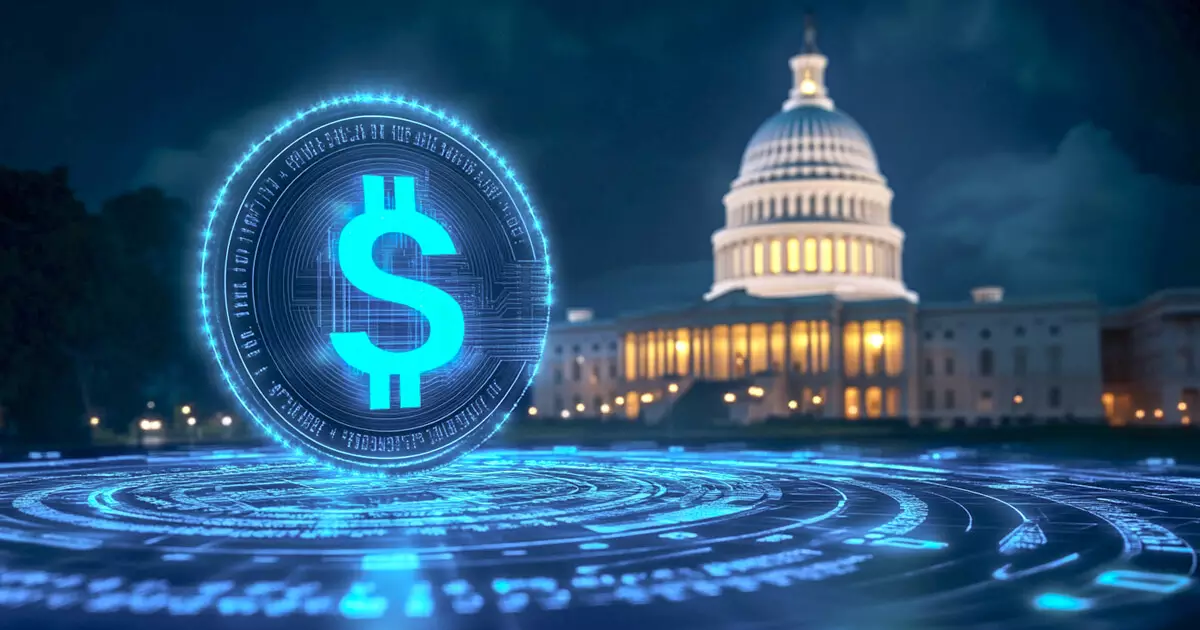In a rapidly evolving financial ecosystem, the need for a robust regulatory framework surrounding digital assets has never been more pressing. Recent discussions spearheaded by the Senate Banking Committee, including Senators Tim Scott and Cynthia Lummis, highlight an emerging consensus on the necessity of establishing a clear market structure that distinguishes between digital asset securities and commodities. The staggering reality is that over 52 million Americans now own digital assets. This figure not only underscores the growing adoption of cryptocurrency but also reveals the urgent necessity for comprehensive regulations that safeguard users and promote innovation.
The Clear Distinction: Securities vs. Commodities
The proposed seven-point framework aims to draw a statutory line between digital asset securities and commodities while empowering existing regulatory bodies rather than establishing a standalone crypto agency. While this may seem practical, it raises concerns about the potential for regulatory overreach from multiple agencies. By adhering to a patchwork of jurisdictions, developers and investors might find themselves engulfed in red tape—an unfortunate parallel to the bureaucratic obstacles that often stifle innovation in other sectors.
The ambiguity that surrounds current digital asset regulations leads to significant loopholes, which nefarious actors can easily exploit. Coinbase’s Ryan VanGrack emphasized the dangers of this uncertainty, warning that it not only invites bad actors into the space but also drives legitimate businesses overseas. In a globalized economy, unclear guidance serves as a deterrent to innovation and capital investment, forcing startups to seek legal opinions to navigate a quagmire of existing laws.
The Urgent Call for Clarity
Industry experts, including former CFTC Chair Rostin Behnam, agree that there remains a substantial absence of a market structure for the non-security segment. This is where Congress has an opportunity to step in decisively. As many stakeholders emphasized, creating a clear regulatory environment that differentiates between centralized firms and decentralized protocols is critical. By doing so, Congress can foster an environment where the benefits of technological advancement, such as lower settlement times, secure transaction processes, and enhanced credit options, can flourish.
Regulatory ambiguity not only stifles innovation but, in a more detrimental scenario, risks placing the United States at a competitive disadvantage in the global digital asset arena. The failure to act decisively could open the door for European nations and other global competitors to establish norms and standards that set the pace for this technology, much like what occurred in the realms of internet commerce and telecommunications.
A Roadmap for Legislation
The committee’s framework suggests an innovative approach to registration, exemptions tailored for distributed ledger projects, and the establishment of customer asset segregation as a critical focal point for user protection. Regulatory bodies could benefit from safe-harbor pilots and inter-agency coordination that streamlines enforcement and minimizes redundancies. Active collaboration between agencies would create a more efficient regulatory landscape that allows compliant businesses to thrive without being bogged down by excessive oversight.
The observed bipartisan momentum, evidenced by recent legislative activity such as the GENIUS Act vote, offers a glimmer of hope. Senators, including Lummis and Hagerty, are keen to foster a cooperative spirit among their peers, urging them to rise above partisan conflicts for the sake of technological progress and competitive standing. A commitment to a more transparent and efficient regulatory framework not only ensures consumer protection but also paves the way for American innovation in the digital asset space.
The Competitive Imperative
Finally, it’s essential for lawmakers to recognize the tangible benefits of adopting clear regulatory measures. The integration of digital assets can lead to lower costs for consumers, expedited remittance processes, and an overall enhancement of the financial system. By investing in regulatory clarity and a supportive framework, Congress can unlock the potential of digital assets to revitalize the economy and empower individuals to harness new opportunities.
As Congress prepares to translate these principles into statutory language, it faces a defining moment. The decisions made now will shape the future landscape of digital assets, potentially setting America on a path toward leadership rather than laggardness in this transformative era.

